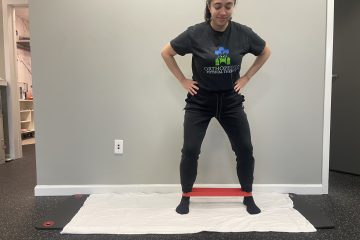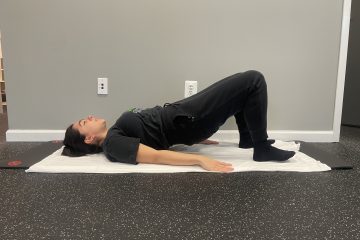Can you imagine getting a major surgery and then not being referred to physical therapy after to rehab your body?
You don’t have to. This is the reality for every birthing person who has had or is having a cesarean section in the United States. A c-section is a major abdominal surgery that nearly 1 in 3 people in the U.S. will have, but very few receive care and physical therapy afterwards.
Although many people are given a general handout on what to do and what not to do when it comes to having a c-section, very few are instructed on how to work on their scar throughout the healing process.
That’s where pelvic health physical therapy comes into play!
Every day, pelvic health PTs help people heal from a c-section, reconnect with their abdominal muscles, and teach them how to work on their scar to prevent future problems.
Why do c-section scar mobilization?
C-section scar mobilization, especially when done in the first 2 years postpartum, can help the scar heal, lay smoother, and prevent adhesions or restrictions in the lower abdomen. Adhesions or restrictions can cause abdominal pain, difficulty with core work, bladder symptoms, pain with intercourse, and give the appearance of the c-section “shelf.”
Just FYI, some c-section scars are vertical, and you would do the same mobilization, just on a different axis.
When should you start c-section scar mobilization?
You can start c-section scar mobilization as early as 2-4 weeks postpartum. The earlier you start working on it, the better off you will be, but it’s never too late to start!
How do you do c-section scar mobilization?
2-4 Weeks:
Around 2-4 weeks, start touching around your c-section scar. You can gently press on the skin surrounding your scar. Do this for a few minutes every day to work on general sensation. In the shower or when washing yourself, gently place your hand on your c-section scar and hold for up to 1 minute. You can also use a cotton ball or washcloth to help with sensation. Your c-section scar will likely be numb at this point, so use very gentle pressure. Make note of any redness or irritation in the area during this time. Your scar may still be healing.

4-8 Weeks:
Between 4 and 8 weeks postpartum, gently move the tissue above and below your scar. Apply a gentle pressure and then pull the skin up, down, and to the side. You can also do small circles above and below the scar, moving side to side. Do this for a few minutes a day.

8-12 Weeks:
Starting around 8 weeks postpartum and after your scar is fully healed and no longer red, you can begin working directly on your scar. Start by gently pressing on the middle part of the scar. If this feels okay, you can progress to gently pulling up and down on the scar. Stay in the middle portion of the scar when working. You can also use various textures and fabrics to help with sensation. Continue gently massaging the area above and below the scar for a few minutes a day.

12+ Weeks:
Around 12 weeks, you can start to perform gentle massage and movement along the entire length of the scar. Move up, down, side to side, and do circles along the scar as well as on the skin above and below. Start to apply greater pressure on the scar as sensation returns. Your physical therapist may also perform gentle cupping or decompression techniques along your scar and teach you how to do this on your own.

What if it’s been more than 12 weeks and I haven’t started working on my scar?
If you’re more than 12 weeks postpartum and haven’t started scar mobilization yet, don’t sweat it! Start from the beginning and progress through the 4 phases as you feel comfortable. This may take 1-2 weeks per phase, or even up to a month.
For more guidance on what to do, it’s best to work directly with a pelvic floor physical therapist. They can teach you various manual techniques as well as instruct you on exercises and mobilizations to aid in your recovery.
That is what we do here every single day at OrthoPelvic PT. Let us help!
Curious to learn a little bit more? Schedule your FREE 10-minute consult call today ✨
Be empowered in education,
OrthoPelvic Physical Therapy


